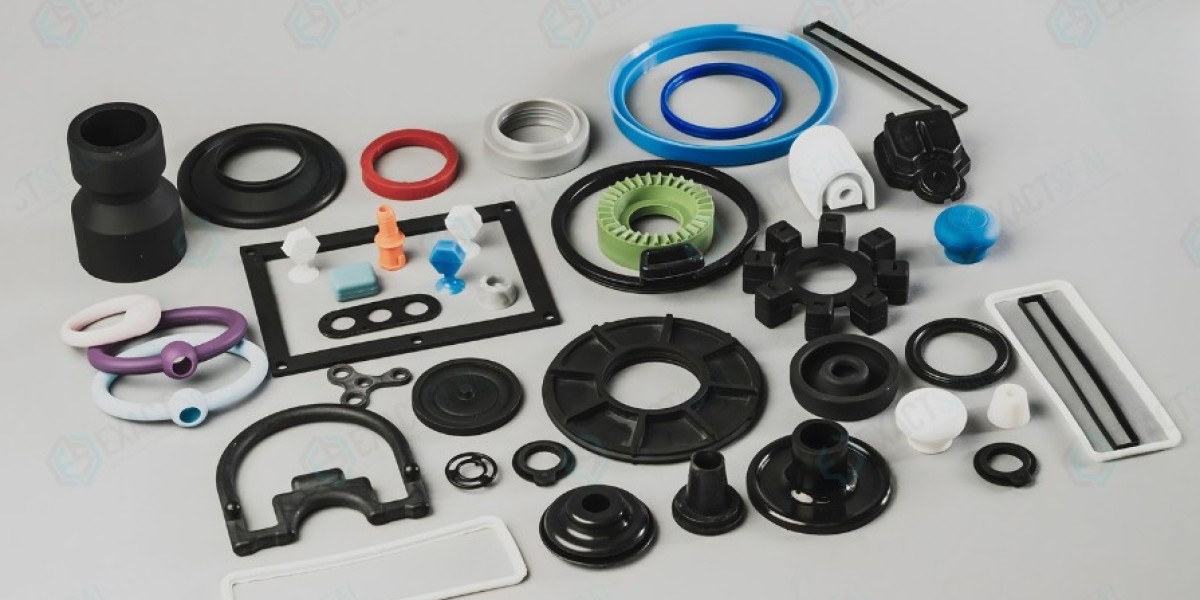Rubber is an incredibly versatile material, essential across multiple industries, from automotive to healthcare, electronics, and beyond. When it comes to producing custom rubber parts with unique shapes and specific durability needs, molded rubber products manufacturers play a vital role. These manufacturers specialize in creating rubber products tailored to unique specifications, delivering high-quality, cost-effective, and resilient parts. This article dives into the process, benefits, and applications of molded rubber products manufacturer, as well as the key factors to consider when choosing a manufacturer.
Understanding Molded Rubber Products
Molded rubber products are created through a specific manufacturing process where raw rubber material is shaped using a mold. This process enables the production of parts in complex shapes, often with high precision and consistency. The molded rubber product manufacturing industry produces a variety of products, including gaskets, seals, bumpers, bushings, vibration isolators, and more, catering to different applications and industry standards.
Key Processes in Molded Rubber Manufacturing
Compression Molding
In this traditional molding process, uncured rubber is placed in an open mold cavity and then closed and heated to a specific temperature. The rubber takes on the shape of the mold cavity, curing under heat and pressure to form a durable part. This method is well-suited for large parts and products that require strong tensile strength.Injection Molding
This process injects heated, uncured rubber into a mold cavity, where it cools and solidifies into the final shape. Injection molding is fast and efficient, ideal for producing high volumes of small, intricate parts with consistent precision.Transfer Molding
In transfer molding, rubber is preheated in a separate chamber and then pushed into a mold cavity. This process offers better control over material placement, making it suitable for complex products with varying thicknesses.
Advantages of Molded Rubber Products
Molded rubber products offer a number of benefits, including:
- Customization: Molds can be designed to create complex shapes and sizes to meet precise application needs.
- Durability: Molded rubber products are highly durable, offering resistance to extreme temperatures, chemicals, and environmental conditions.
- Cost-Effectiveness: Efficient molding processes make large-scale production cost-effective, reducing the overall cost per unit.
- Consistency: High-quality molds ensure uniformity across parts, which is essential for applications that require consistency.
Applications of Molded Rubber Products
Molded rubber products are integral to a wide range of industries:
- Automotive Industry: Gaskets, seals, and vibration dampeners are essential in vehicles, providing durability and noise reduction.
- Aerospace and Defense: Precision-molded rubber parts ensure secure seals and resistance to extreme environments, essential in aerospace equipment.
- Healthcare: Molded rubber parts are used in various medical devices, from seals to connectors, due to their biocompatibility and sterility.
- Electronics: Rubber grommets and bumpers in electronic devices offer protection against shocks and enhance durability.
Choosing the Right Molded Rubber Products Manufacturer
When selecting a molded rubber products manufacturer, it’s essential to consider several factors:
Material Expertise
Manufacturers with expertise in different rubber materials (like natural rubber, EPDM, silicone, or nitrile) can recommend the best material for your specific needs.Quality Assurance
Look for a manufacturer with robust quality control standards, including certifications like ISO 9001. Quality control processes ensure the production of reliable and consistent products.Customization Capabilities
The ability to design custom molds to your specifications is crucial, especially for unique or complex products. Manufacturers with in-house design capabilities can streamline this process and provide tailored solutions.Experience and Industry Knowledge
Experienced manufacturers understand the nuances of various industries and can meet industry-specific standards and requirements.Lead Time and Production Volume
Assess your manufacturer’s capacity for high-volume production and their ability to meet your timeline.
Innovations in Molded Rubber Products Manufacturing
As technology advances, so does the potential for molded rubber product innovation. Developments like computer-aided design (CAD) for precision molding, automation in production, and sustainable rubber sourcing are shaping the future of this industry. Additionally, eco-friendly rubber alternatives and improved recycling processes make it possible to create high-quality rubber products while reducing environmental impact.
Final Thoughts
Choosing a reliable molded rubber products manufacturer is crucial to ensuring the quality, longevity, and functionality of your products. From understanding the different molding techniques to assessing the manufacturer’s industry expertise and customization capabilities, every detail counts. With the right manufacturer, molded rubber products can elevate the quality of your finished product, enhance operational efficiency, and reduce costs in the long run.








